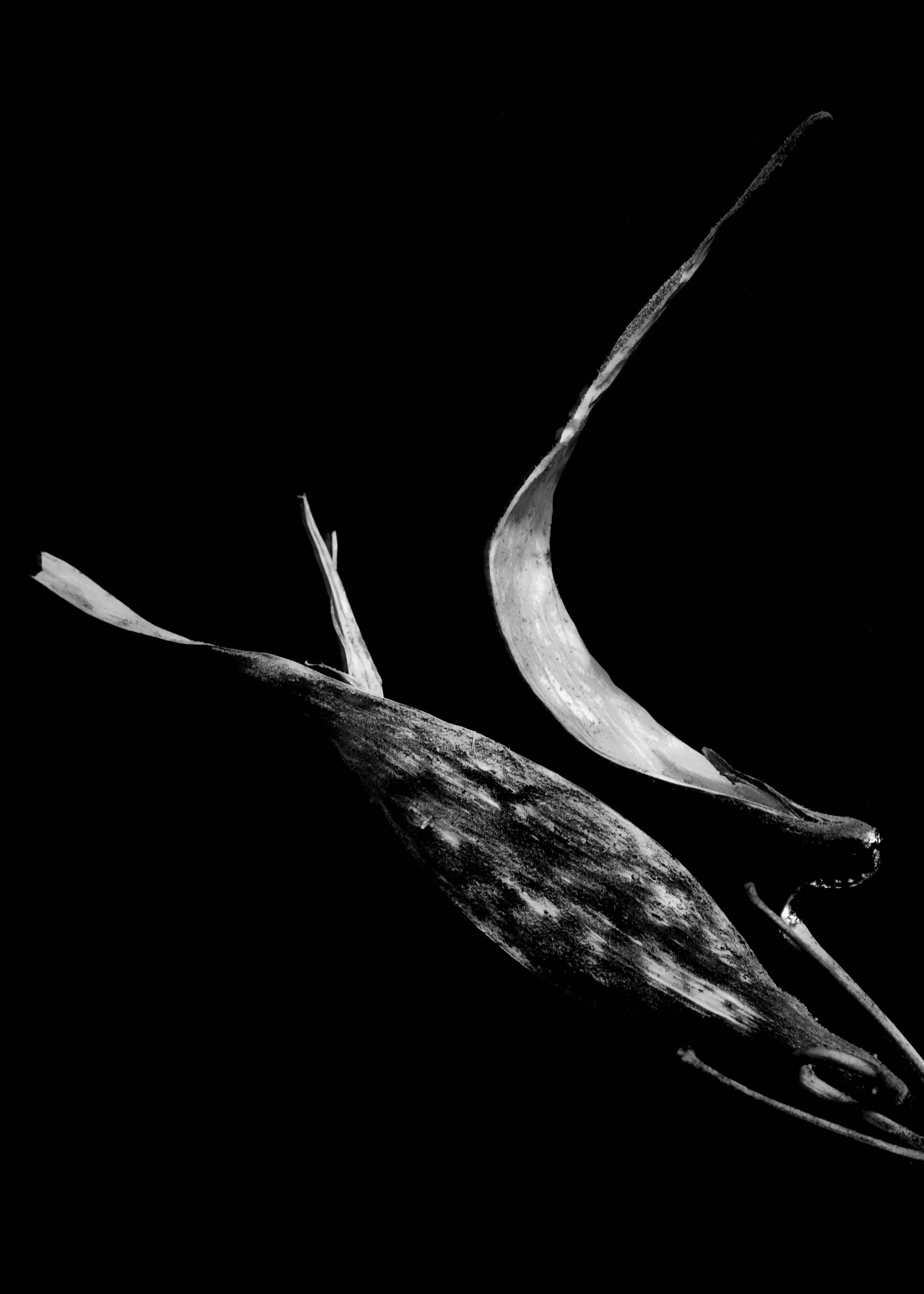From Still Life to Flight and Back Again
by Marjorie Maddox
Flight came first, the stunning photograph by my collaborator Karen Elias, that is. It swooped into my in-box with Karen’s brief explanation that she’d seen a call for “things with wings.” Did I want to use the photograph as a prompt? As with all of Karen’s work, I was tempted immediately. The bold black-and-white image captured the present, gave evidence of the past, and lifted the viewer into the future. There was a life cycle here—and not just one.
Interestingly enough, the month before I had submitted several milkweed-related poems to Tupelo Press’ anthology project. My son calls this “the theory.” Once your attention is drawn to a word or object, it suddenly seems to appear everywhere. (Apparently, this is a well-documented phenomenon known as The Baader–Meinhof phenomenon.)
Milkweeds were in the air and in the brain—and suddenly here was another. The anthology deadline had passed, a poem had been accepted, but the milkweed was not done with me. Not only did their wisps keep collecting at the edges of my brain, but now so did the images of wings, emergence, and flight that arrived with Karen’s image.
And since art—including photograph and poem—often begins as still life and transforms to action, this is where “Still Life with Milkweed or Bird” originated. Because the photographer had connected plant and fowl, I, too, needed to ask the questions: “Where is the bird in this image? And where is the milkweed? In what ways are they part of each other? In what ways are they part of me? Part of us?”
To approach these questions, of course, I needed to enter not only the photograph but also what appeared to me as the life cycles of the milkweed and the bird. And so I began:
Flight by Karen Elias
Still Life of Milkweed or Bird
- after the photograph Flight by Karen Elias
Inside, once
you were a wisp
of flight,
seeds weathered
to air, a delicately
tied fly flung
across currents
of stream
far above
the rippling
dreams of trout.
Flight, to me, is dream-like, so I wanted to capture this surrealistic quality in image, sound, and transformative possibilities. But dreams also switch “mid-stream,” suddenly incorporating optional realities: “Or maybe . . . ,” the driving catalyst of so many poems, the cousin of “What if . . . ?” There is a soaring quality to these options (as emphasized by the line and stanza breaks). Is this a milkweed readying itself for the next flight of its journey? What connections can be made to our own bird-like choices to escape, or take risk, or merely revel in the beauty and joy of wings, air, and rebirth? And so the poem moves between escape, sacrifice, surprise, risk, willingness, and a type of resurrection—“everything/still willing/to soar.”
Isn’t this also the life cycle of art, delighting us with the unexpected? If we are willing to climb aboard, art carries us beyond the rooted to some higher place. From this different height or angle or perspective, we can look and say, “Ah! Yes! Now I see where you’ve flown and why?”

